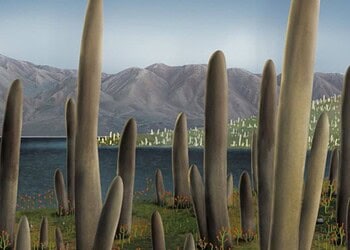
China is a big and rugged country, and figuring out how many trees it has is a gargantuan task. But a team led by Kai Cheng from Peking University took it head-on.
The key piece of information comes from LiDAR. LiDAR (Light Detection and Ranging) is a remote sensing technology that uses laser pulses to measure distances to the Earth’s surface, creating precise 3D maps of terrain and objects. When mounted on UAVs (unmanned aerial vehicles or drones), LiDAR systems scan the landscape from above.
Through clever algorithms, the system builds detailed 3D models of forests, including individual tree heights, canopy structure, and density. This makes UAV LiDAR a powerful tool for counting trees accurately, especially in dense or remote areas where traditional surveying methods fall short.
The team has been collecting this type of data since 2015. They ended up with over 400 terabytes of data gathered from more than 76,000 forest plots from across the country. But they couldn’t map the entire country. They covered “only” about 540 square miles (1,400 square kilometers). Even so, this enabled them to build a database that they could then extrapolate.
By integrating the results with existing databases of climate, soil, and topography, and by employing machine learning techniques to assess the number, they created China’s most thorough estimate of tree density.
According to the results, China has a staggering 142.6 billion trees, or around 100 trees per person. Of course, urban areas and the high Himalayas have far fewer trees.
Value in numbers

Having accurate tree estimates is crucial for countries because trees play a vital role in climate regulation, carbon storage, biodiversity, water cycles, and soil health. Knowing how many trees exist — and where they are — helps governments monitor deforestation, plan reforestation efforts, and report carbon stocks for international climate commitments like the Paris Agreement. It also supports sustainable land management, disaster prevention (like landslide risk assessment), and can guide agricultural and urban planning.
But there are also limitations. The extrapolation is still only an estimate, and the LiDAR approach can’t detect trees below thick canopies.
However, China’s tree coverage could increase substantially. In 2022, the country announced plans to plant and conserve 70 billion trees by 2030 as part of the global tree movement, aiming to improve air quality combat climate change, and increase forest carbon sinks. Additionally, China has completed a 3,000-kilometer green belt around the Taklamakan Desert, a project spanning 46 years aimed at curbing desertification and reducing sandstorms. Furthermore, the “Ant Forest” initiative, launched in 2016, has engaged over 650 million users in adopting a green, low-carbon lifestyle. Collectively these users have reduced carbon emissions and generated over 26 million tons of ‘green energy.’
While challenges remain, this new tree estimate offers a solid foundation for smarter forest management and climate action.
The study was published in Science Bulletin.






